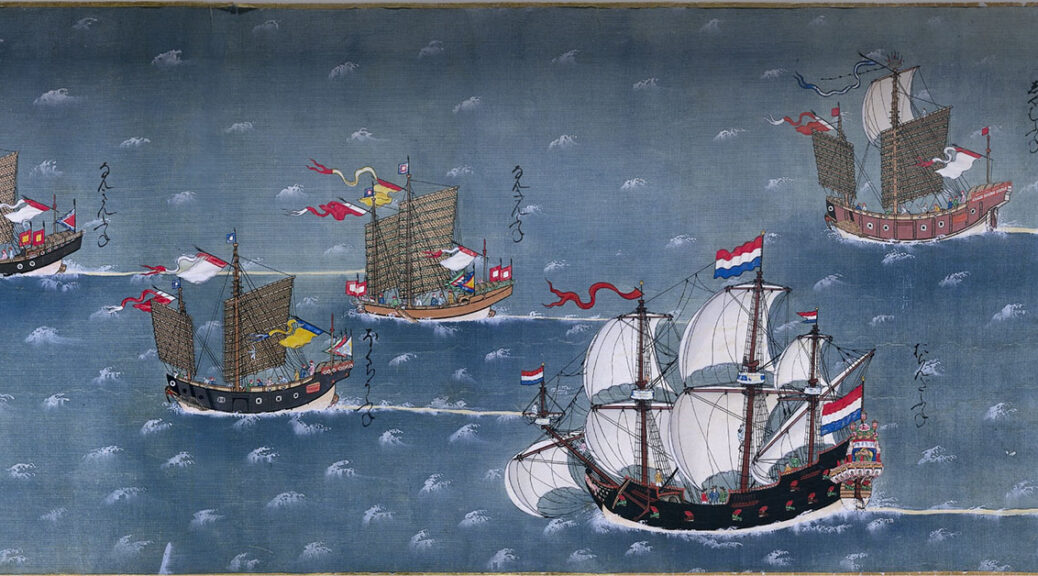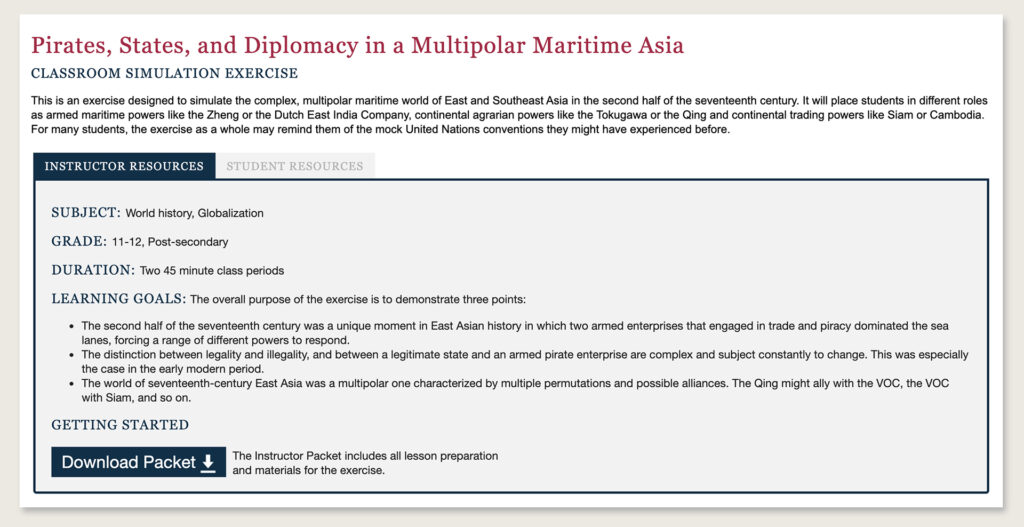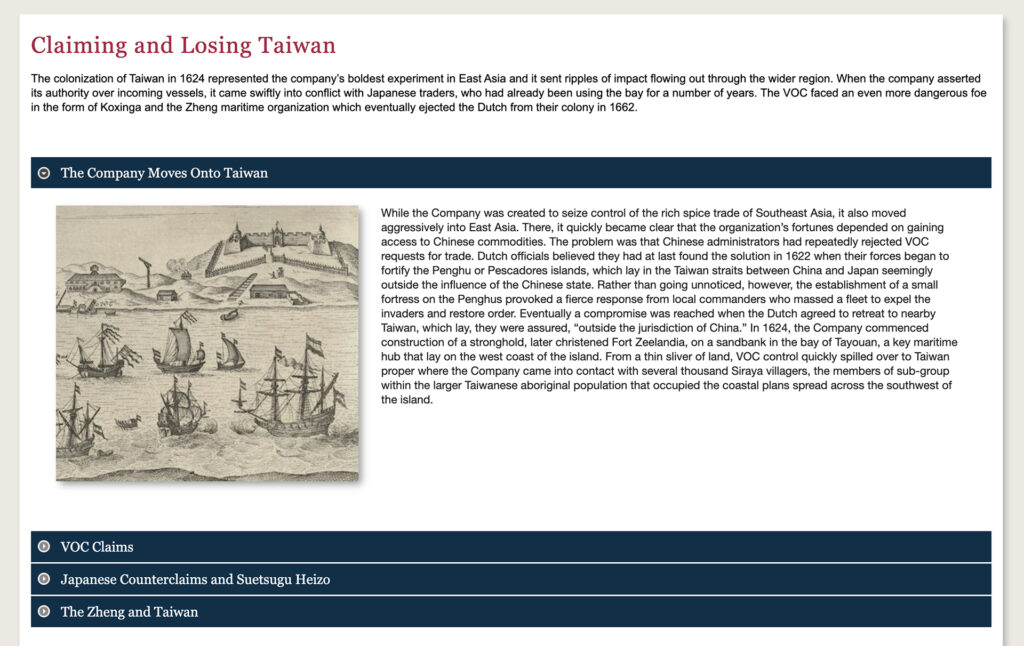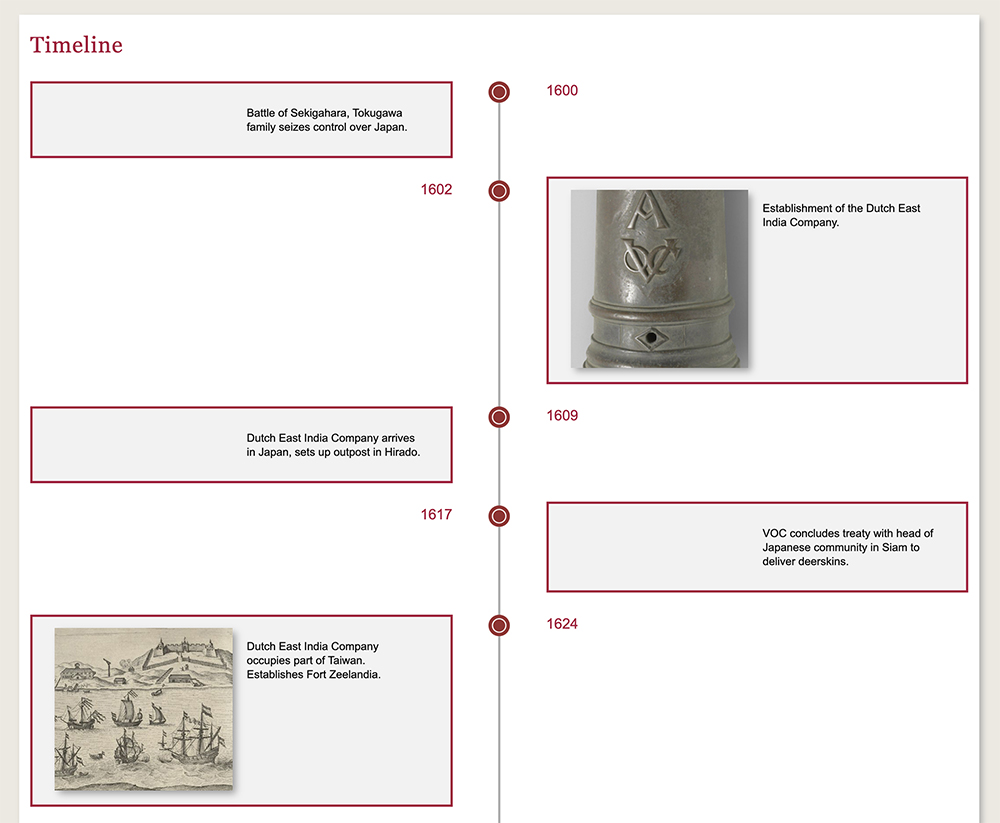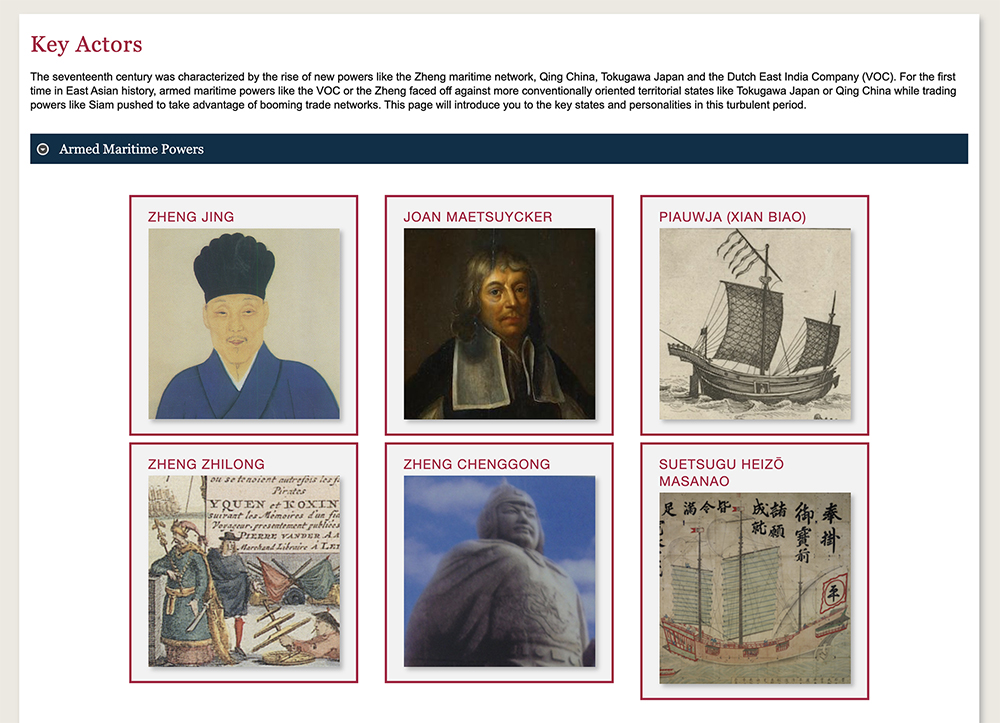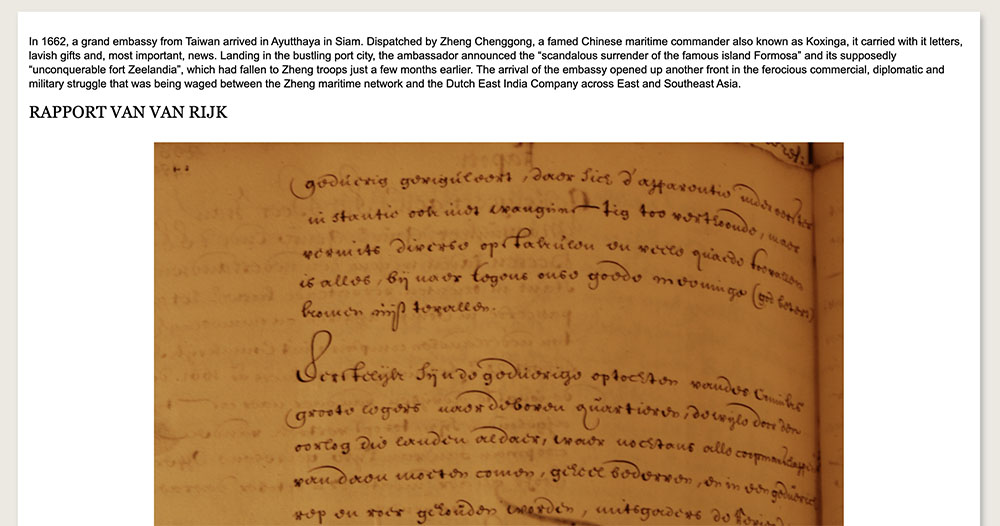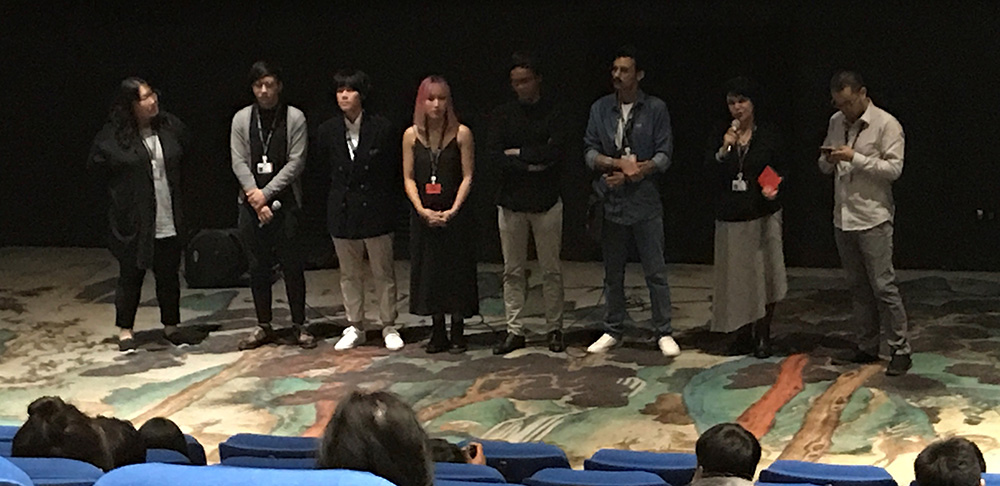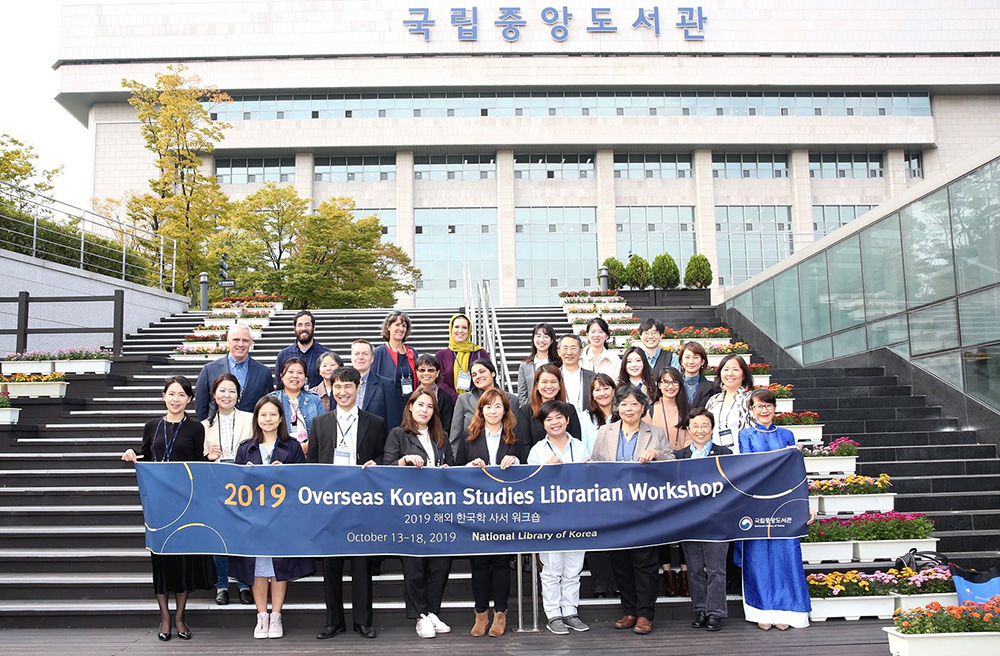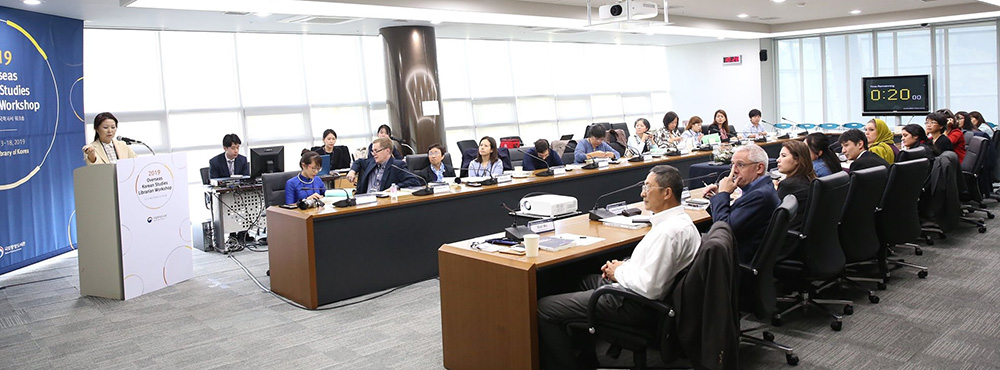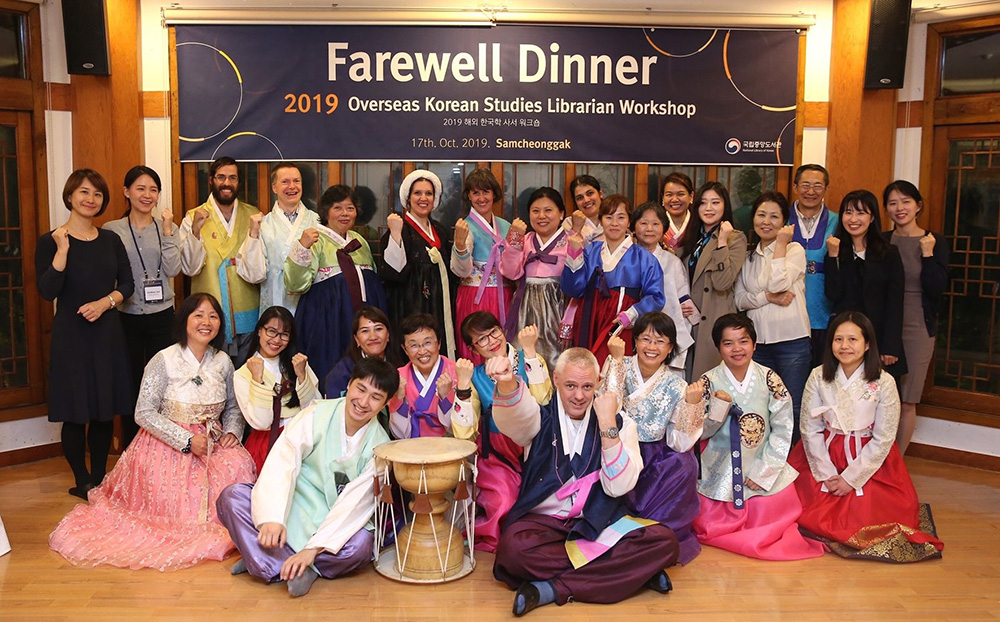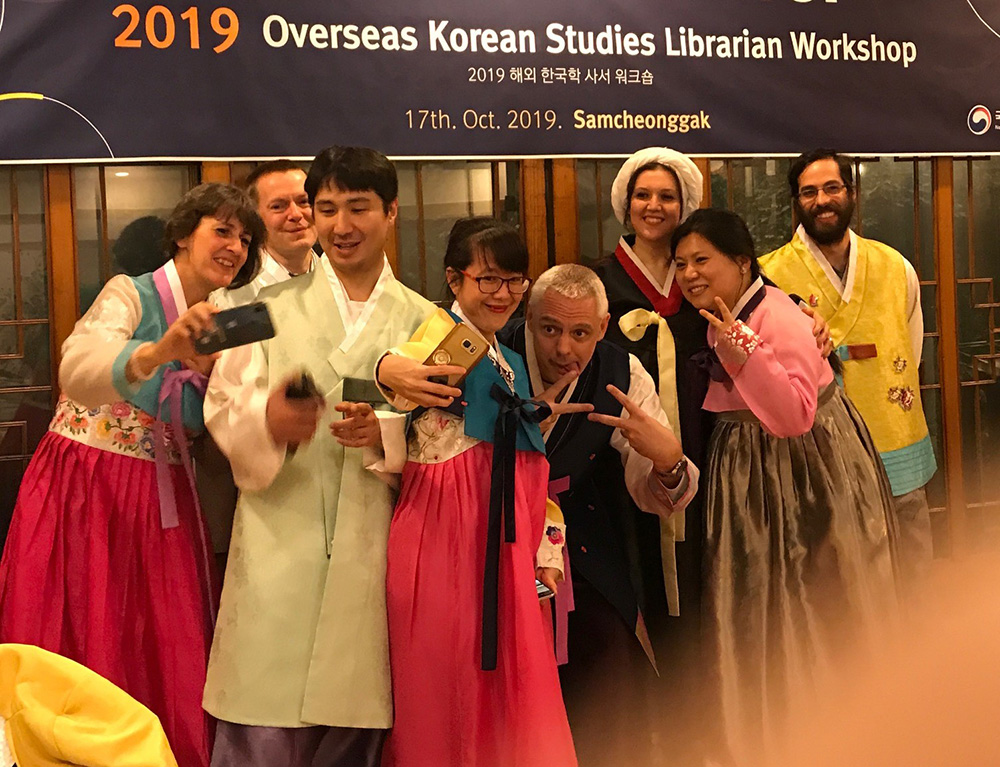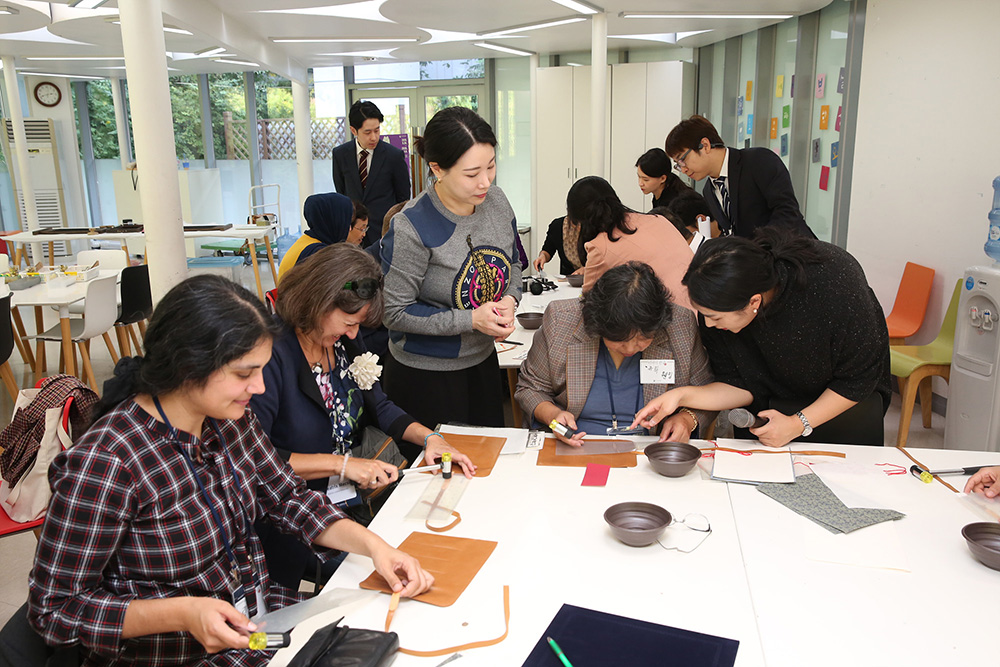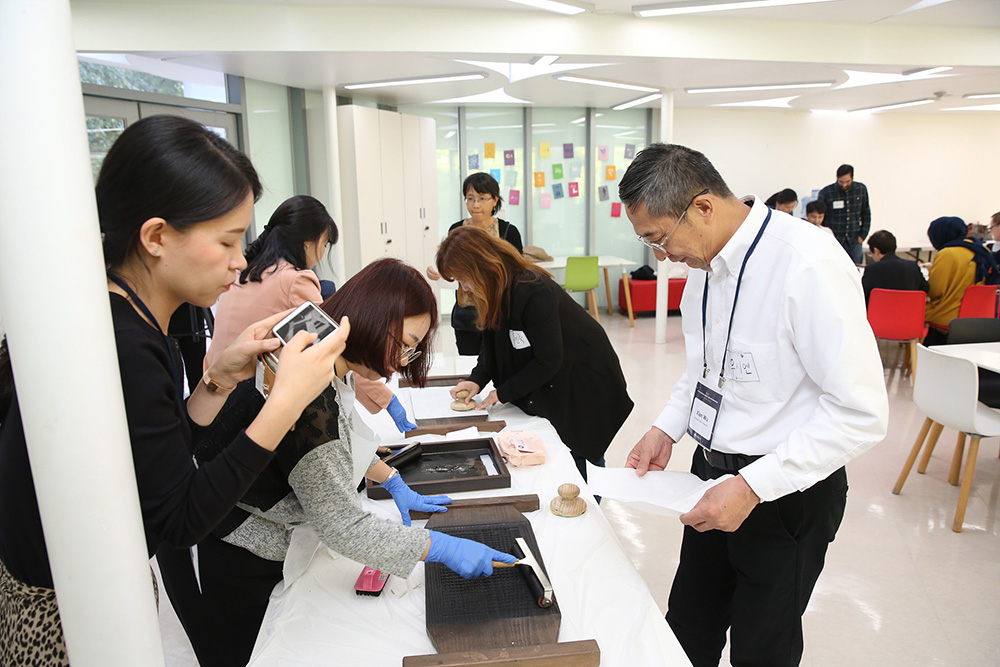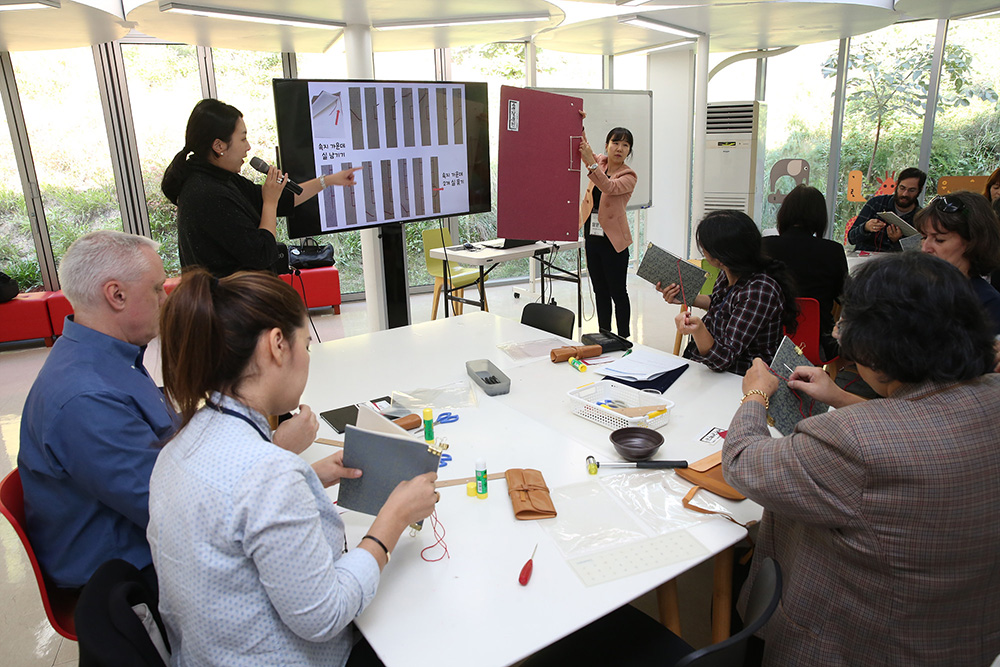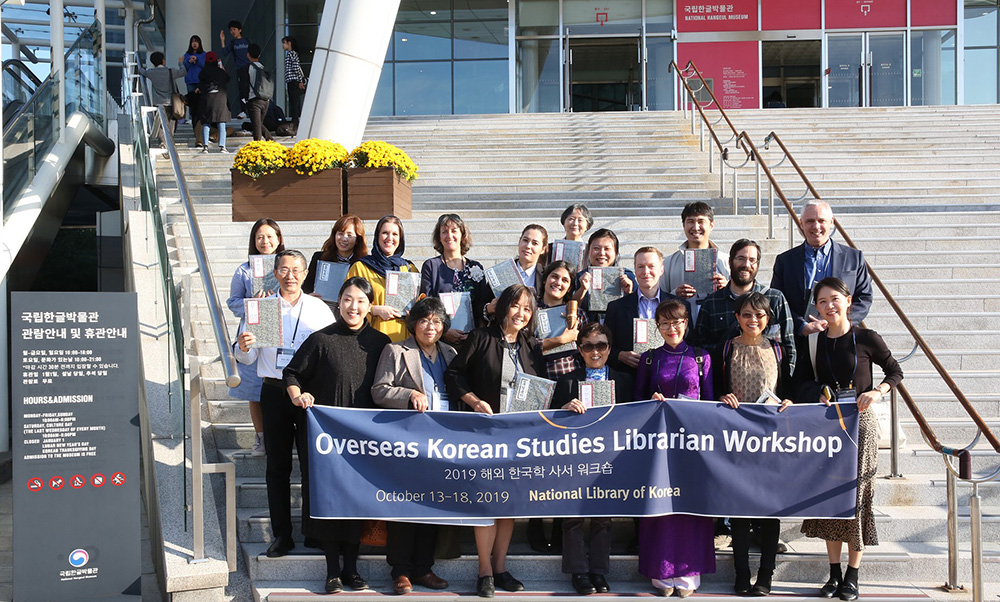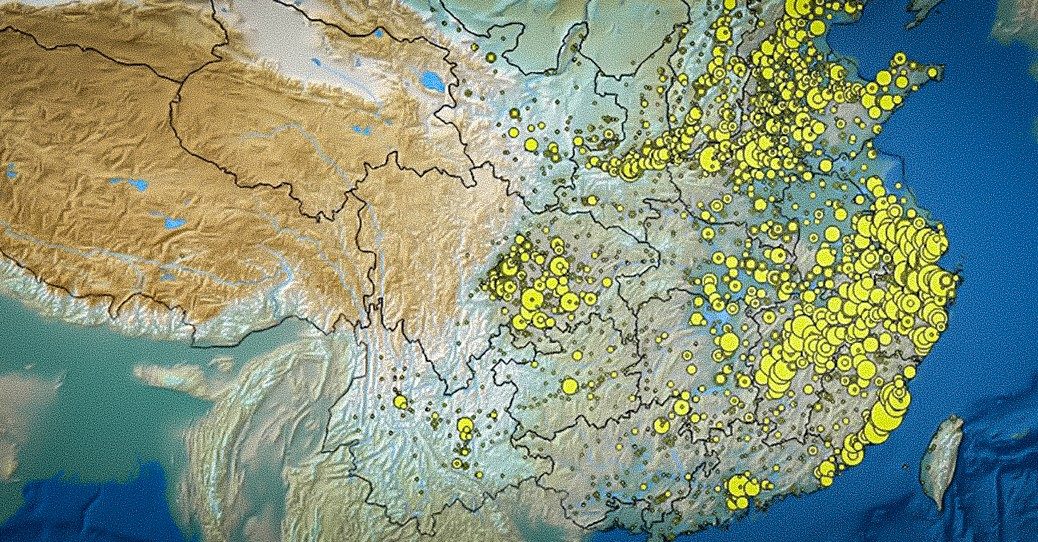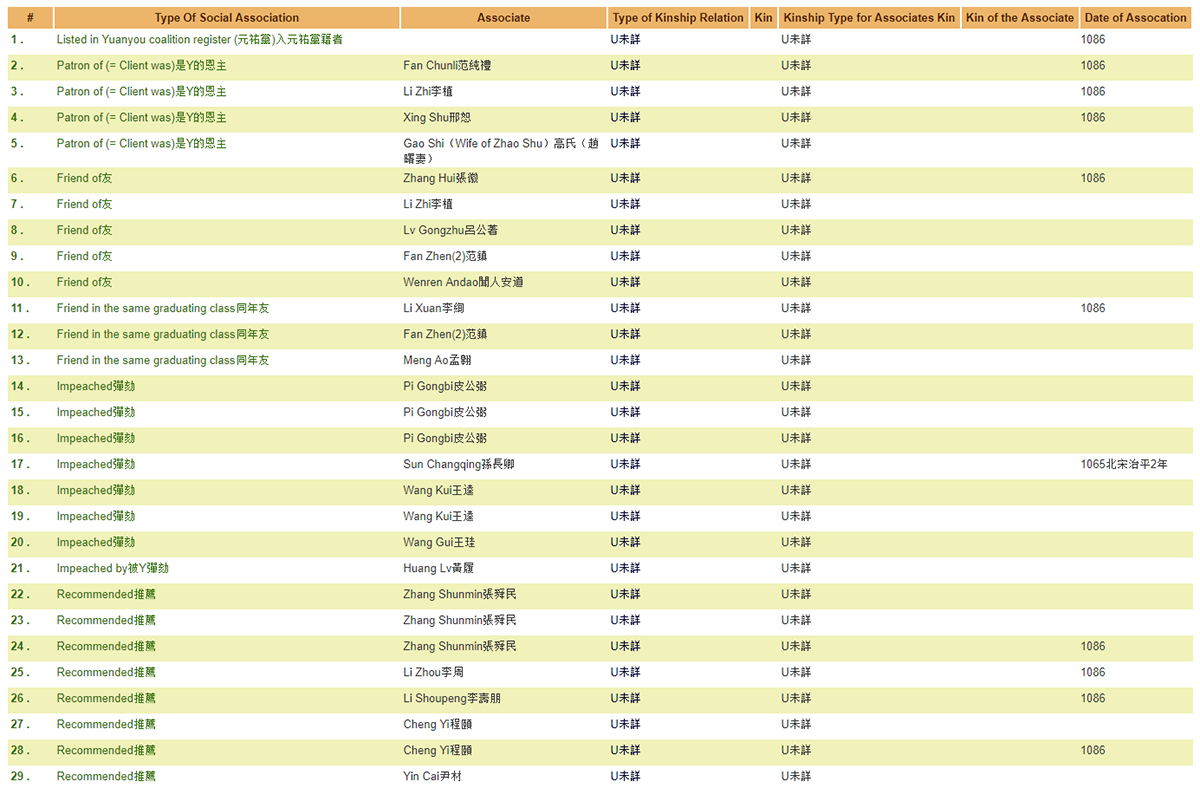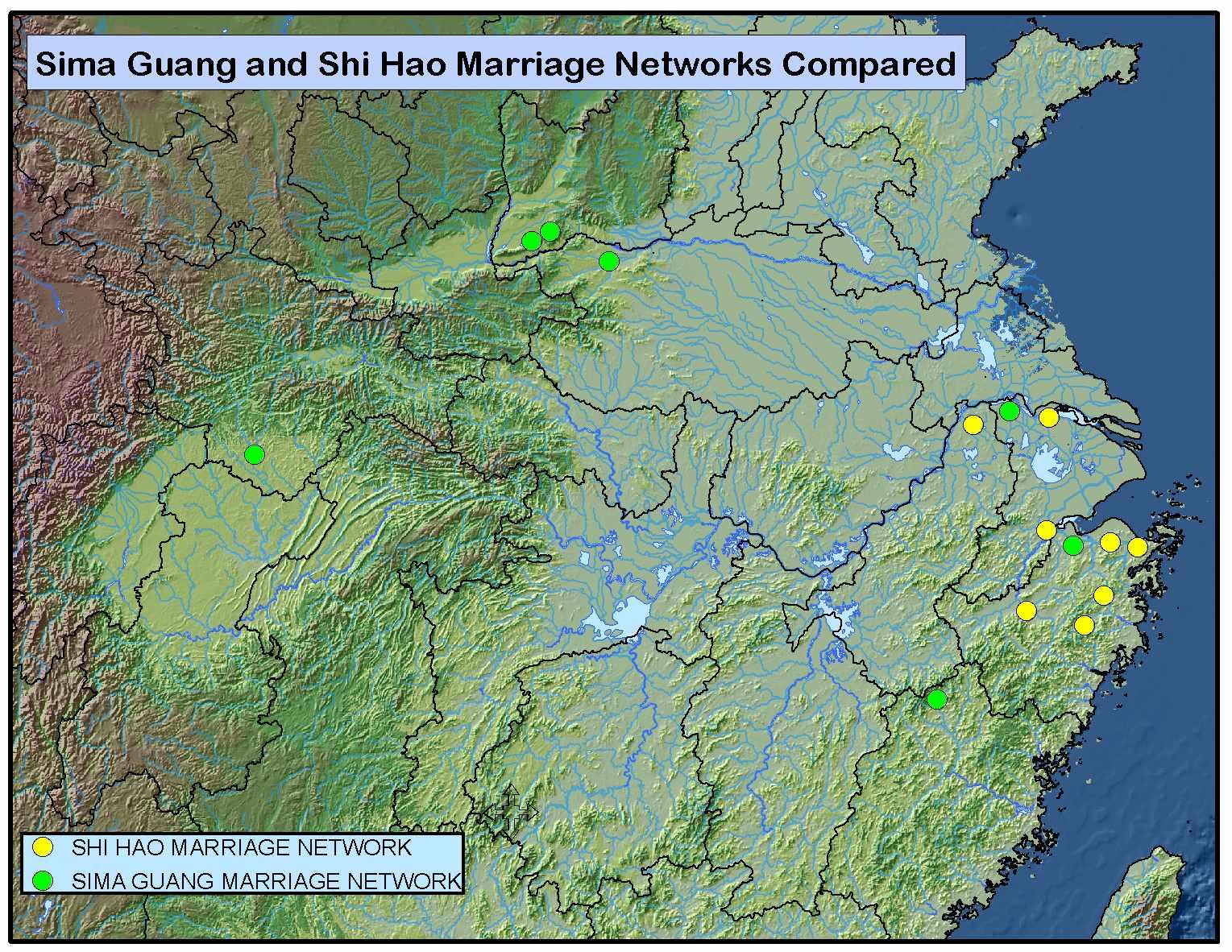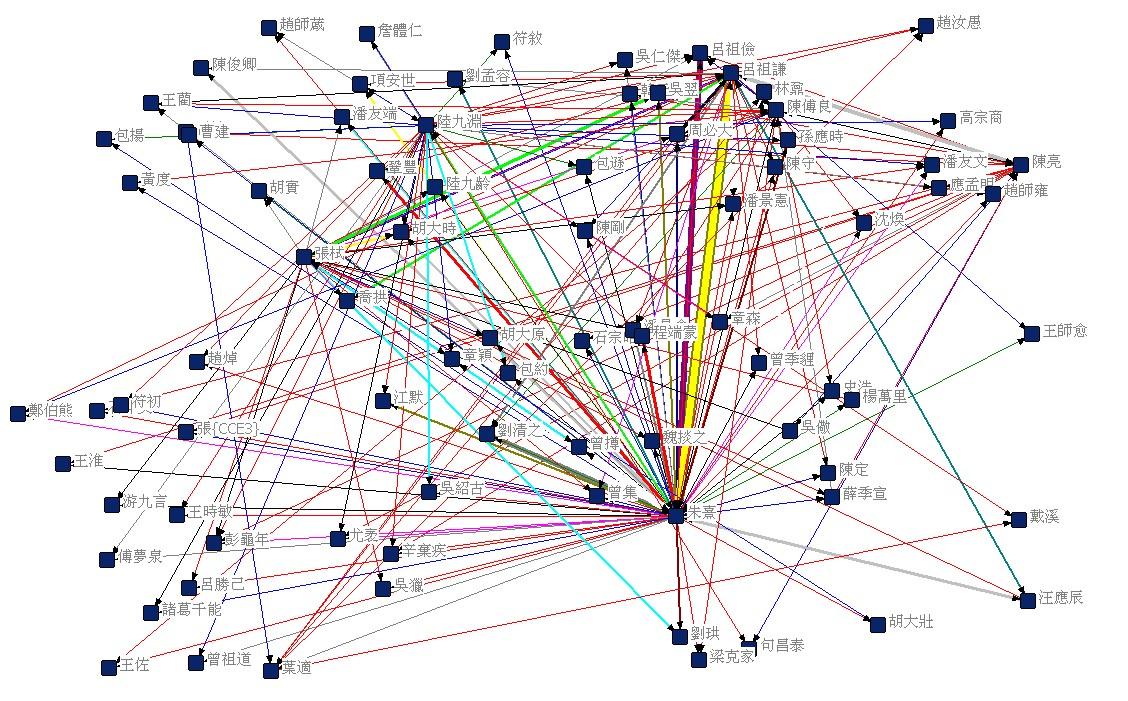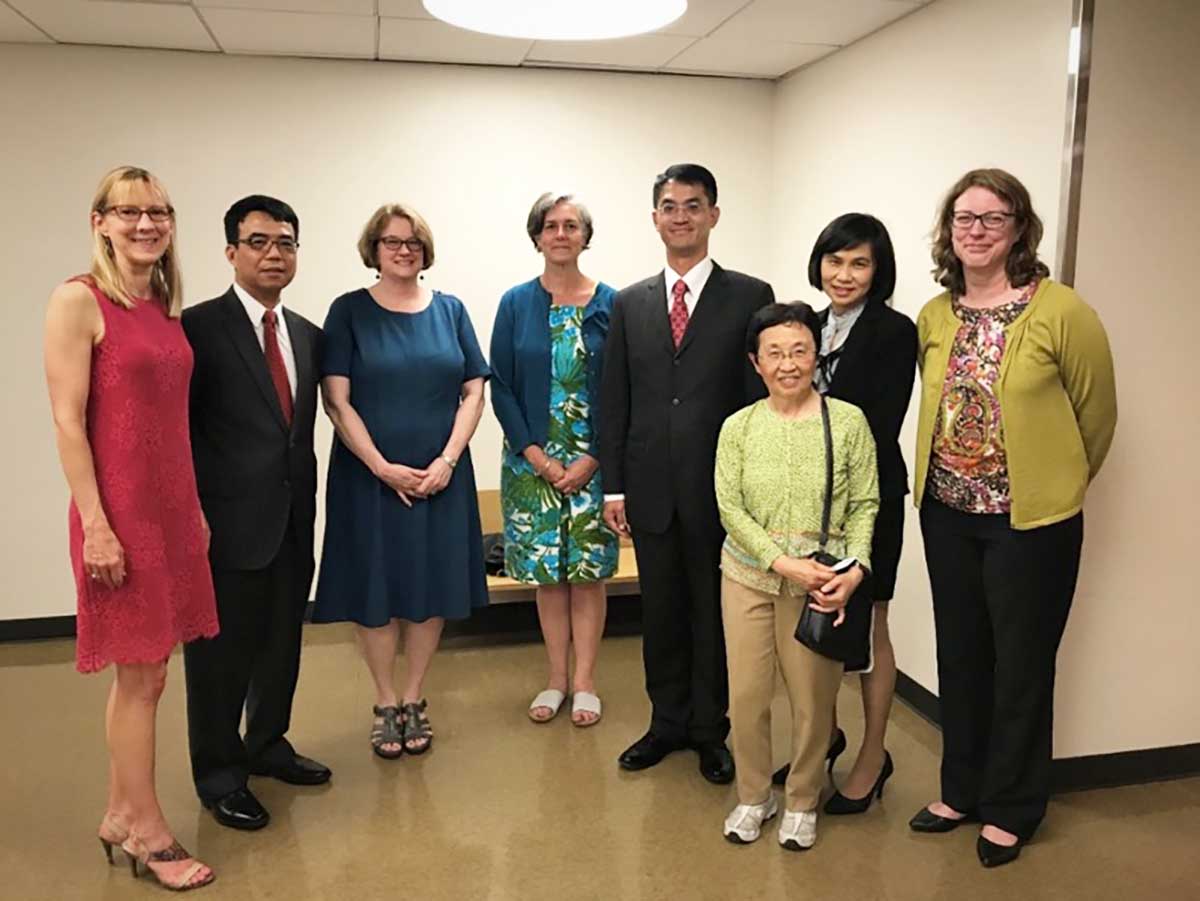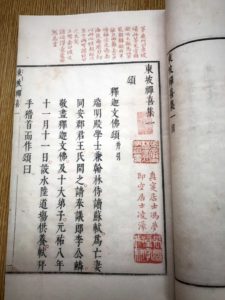Read, hot & digitized: Librarians and the digital scholarship they love — In this series, librarians from UTL’s Arts, Humanities and Global Studies Engagement Team briefly present, explore and critique existing examples of digital scholarship. Our hope is that these monthly reviews will inspire critical reflection of and future creative contributions to the growing fields of digital scholarship.
Maritime Asia: War and Trade is a multi-media Drupal site which introduces viewers to the complexities of 17th century war and trade in East and Southeast Asia. The open educational resource (OER) is a collaboration among UT History Professor Adam Clulow, Professor Xing Hang at Brandeis University, and the Roy Rosenzweig Center for History and New Media at George Mason University (RRCHNM). This open educational resource can be used effectively for outreach and teaching.
In the historical documents presented and examined on the site, six power contenders are involved: two armed maritime powers, the Zheng family of China & Taiwan and the Dutch East India Company (VOC), two major land agrarian powers, Qing China and Tokugawa Japan, and two continental trade powers, Siam (now Thailand) and Cambodia who took advantages in this global trade and diplomacy competition among major powers. It is interesting to note that the main actors involved were all extensively global.
The website for Maritime Asia: War and Trade has five main themes through which the viewer can explore this multifaceted history:
- Maritime Exercise. This part of the website functions as an open educational resource (OER) classroom simulation exercise targeted to 11th and 12th graders and post-secondary students. An instructor’s packet of lesson plans and interesting and inspiring questions for student debate can be downloaded.
- Exhibits. Included here are exhibitions of documents that highlight the history of the Zheng family and the Dutch VOC. For example, the first generation of the Zheng family, Zheng Zhilong of southeast China, was globally successful in both piracy and trade from Japan to Siam (now Thailand). As a player in the Ming Dynasty, Zheng Zhilong was appointed “Admiral of the Coastal Seas.” His son, Zheng Chenggong (Koxinga), was born in Japan to a Japanese mother. Koxinga continued his father’s powerful maritime trade and military pursuits after his father’s had surrendered to Qing China in 1644 (and was executed in 1661). Koxinga defeated the Dutch in 1662, forcing out their colonial powers from Taiwan, and he shifted the Zheng family stronghold from China to Taiwan. Another exhibit from the website displays Dutch VOC highlighting their ships and the fort they built in Taiwan.
- Timeline. This portion of the website graphically documents major events among the 6 powers throughout the 17th century, from 1600 to 1683.
- Key actors. Exploring individual personalities is one of the most compelling ways to dive into history. Included here are presentations of individuals such as Zheng Zhilong, the founding patriarch of the Zheng family, Joan Maetsuycker, a governor-general from the VOC, Tokugawa Ietsuna of Japan, Kangxi Emperor of China, King Paramaraja VIII of Cambodia and King Narai of Siam (now Thailand).
- Archive. The Maritime Asia website highlights and provides contextualized access to primary source documents. While the physical artefacts are housed in the Nationaal Archief of the Netherlands and the Rijksmuseum in Amsterdam, users can access the digital surrogates through the website.
Further readings on related subjects:
大航海時代與17世紀台灣 (Age of exploration and the 17th century Taiwan)
鄭成功來臺 (Zheng Chenggong came to Taiwan)
Two open source Chinese learning websites created by the Research Center for Digital Humanities, National Taiwan University.
Pillaging the Empire Global Piracy on the High Seas, 1500-1750. / Kris Lane. 2016.
Sea rovers, silver, and samurai: Maritime East Asia in global history, 1550-1700 / edited by Tonio Andrade and Xing Hang. 2016.
Encounters: the meeting of Asia and Europe, 1500-1800 / Edited by Anna Jackson & Amin Jaffer. 2004.
Maritime Taiwan: historical encounters with the East and the West / Shih-shan Henry Tsai. 2009.
The colonial ‘civilizing process’ in Dutch Formosa, 1624-1662 / Chiu Hsin-hui, 2008
Formosa under the Dutch: described from the contemporary records / by Rev. Wm. Campbell. 2019.
Lost colony: the untold story of China’ first great victory over the West / Tonio Andrade. 2011.
How Taiwan became Chinese: Dutch, Spanish, and Han colonization in the seventeenth century / Tonio Andrade. 2008.
The Dutch impact on Japan (1640-1853) / Goodman, Grant Kohn. Leiden, E.J. Brill, 1967.
Japan and the Dutch, 1600-1853 / Grant Kohn Goodman. 2000.
The quest for civilization: encounters with Dutch jurisprudence, political economy, and statistics at the dawn of modern Japan / Okubo Takeharu. 2014.
Jan Compagnie in Japan, 1600-1817; an essay on the cultural, artistic and scientific influence exercised by the Hollanders in Japan from the seventeenth to the nineteenth centuries / C.R. Boxer. 1936.
Dawn of Western science in Japan. Rangaku kotohajime / Genpaku Sugita. 1969

